Barbara Dennerlein for jazz-rock/fusion
Printed From: Progarchives.com
Category: Progressive Music Lounges
Forum Name: Suggest New Bands and Artists
Forum Description: Suggest, create polls, and classify new bands you would like included on Prog Archives
URL: http://www.progarchives.com/forum/forum_posts.asp?TID=122097
Printed Date: July 19 2025 at 19:32
Software Version: Web Wiz Forums 11.01 - http://www.webwizforums.com
Topic: Barbara Dennerlein for jazz-rock/fusion
Posted By: BaldJean
Subject: Barbara Dennerlein for jazz-rock/fusion
Date Posted: January 30 2020 at 15:23
|
this will become a long post, but bear with me for I want to make my case thoroughly  . .I have been a Barbara Dennerlein fan for a long time; Friede and I saw her live 3 times (last time Nov 27th 2019 in Cologne). she is an incredible musician, but I did not consider her to be a fitting addition to the archives; I thought she was firmly located in jazz territory. but this opinion of mine has changed during the last 2 years in which we acquired more of her albums. in the late 80s and all throughout the 90s she released a string of albums like "Straight Ahead" (1989), "Hot Stuff" (1990; that one particularly), "That's Me" (1992), "Take Off" (1995), "Junkanoo" (1997) or "Outhipped" (1999), maybe even "Orgelspiele" (1984) that can be considered to be jazz-rock/fusion, albeit definitely with her own stamp on it. she definitely is a highly innovative artist for several reasons: 1) she utilizes the foot pedals of her Hammond organ. while she is not the only one to do that no-one surpasses her in that regard. she even does occasional foot pedal solos. 2) she integrated MIDI-technology into her Hammond B-3 and thus can make her Hammond sound like (for example) a piano, a vibraphone, a trumpet or, with the pedals, an acoustic bass. 3) she plays her music on pipe organs too. again she is not the only one to do it. but she has taken this to a completely new level. about 50% of her concerts are on pipe organ meanwhile, and she has written compositions especially for them. she has meanwhile played on about 300 pipe organs all over the world. she also made three recordings on which she only plays pipe organs, and it is absolutely incredible what she can get out of them. she also made a recording with a symphony orchestra. to quote her: "to me, jazz is a synonym for freedom. freedom from prejudice and discrimination, freedom from constraints and convention." many reviewers of her music point out how innovative she is too; here a few examples (I will highlight passages that I consider to be of special importance): "That's The Way The Organ Should be Played.
Barbara Dennerlein has indeed developed her own signature sound and
approach to the Hammond B3 organ, whereas most organ ensembles include a
bassist to lay down the bassline, or use their left hand to play the
bassline on the keyboard, Dennerlein uses the foot pedals to play the
bassline and she also incorporates the use of Midi technology to further
enhance the listener's experience. ... Dennerlein's experimentation and
creativity with her own compositions, however, goes beyond her
innovations with the bassline, for she is considered to be an artist who
blurs the lines between jazz and the blues and the various sub-genres
of jazz music (remark by me: of which jazz-rock/fusion is one). In fact over the years, she has become just as
comfortable playing a pipe organ in more classically oriented concerts.
On the Hammond B3 she can play a strident up-tempo piece or she can find
a deep funky groove, and at other times she treats her fans to a
mellower jazz tune." (Riveting Riffs, Canada) "Impressions of the 51st Monterey Jazz Festival... Swinging into
the Monterey Jazz Festival's final evening, German organist Barbara
Dennerlein wastes no time in digging a deep soul-jazz groove.
"Easygoing," an original tune with a cool "Killer Joe" walking vibe,
finds Dennerlein stretching out almost instantly with a supercharged
solo that sounds like it requires three hands. And then, as if to make
sure all cylinders are firing at full capacity, she immediately leaps
into a second solo, using nothing but the bass pedals at her feet.
Having thus established her total mastery of organ-jazz conventions,
Dennerlein then proceeds to shatter the mold. Without ever sacrificing
the almighty groove, she calmly guides her trio into dense thickets,
modernist harmonies and odd meters. Dennerlein possesses awesome
technique and a prodigious feel for the dynamic range of her instrument,
varying the feel throughout each tune from a whisper to a scream. An
accomplished pipe organist as well, Dennerlein frequently makes the B3
mimic its larger cousin, at one point summoning a remarkable 5 second
blast like a Bach fugue, a radio soap opera and a sci-fi movie score
rolled into one. These are the best moments of the set, with Dennerlein
and guitarist Brian Pardo crackling with the concentrated power and
focus of a laser beam, rapturous and unrelenting..." (Jazzobserver, USA) "Pedal Power - the virtuosity of organist Barbara Dennerlein. ...a new and distinctive voice on the Hammond has been turning that world upside down... Barbara Dennerlein has been rewriting the rulebook. She combines incredible co-ordination of hands and feet with complete rhythmic freedom. On her brief London appearance, she demonstrated this with originals..., shifting between different metres and chorus lengths...she proved she could be just as inventive and free within the standard repertoire. Opening with a bluesy tribute to Jimmy Smith she showed just how far she has moved forward from his style of playing. The secret is in her feet. Not only has she linked her pedals to a midi system that makes them sound like an electric bass, but she is a virtuoso on them, heeling and toeing her way through her solos like a rally driver. It's as if there is a ghostly extra member of the band, as she sits stock still on her bench, hands by her side, letting her feet fly over the pedals, with all the double-time phrases and turnabouts of a genuine bass guitarist, even down to the nasal, clicking snap of the invisible strings against an invisible fretboard. Accompanying the rest of the band, and her own keyboard solos, she is a miracle of co-ordination, her left foot pounding out a funky bassline, her right food opening the volume control, her left hand adding chords, and her right stabbing away at riffs that straddle the beat...Dennerlein's incredible energy." (The Times, London/UK)"Jazz organ like you've never heard it. Barbara Dennerlein ... has
pulled off perhaps the most formidable feat in jazz - one that has
stumped many American players more than twice her age: She's established
herself as an original on an instrument where originality is as rare as
a California rainstorm. Arguably, Dennerlein is the first artist since
Larry Young to free the Hammond organ from the shadows of Jimmy Smith
and cast it in an entirely new light. Nearly every B-3 specialist to
emerge over the past three decades has, to a degree, presented only one
or another variation on Smith's approach. The same funky feels, the same
percussion chuffs, the same riffs and repeated notes, and apparently
the same tenor sax player, have been trotted out by Brothers, Grooves,
and Wild Bills time and again. Though not mere carbon copies of Smith,
the top players in this league create an impression of sameness that the
top pianists, drummers, and even bass players manage to avoid. Not so
with Dennerlein. Despite to an occasional nod to her instrument's ribs-and-grits tradition, she prefers to explore more modern and varied terrain... The title cut from 'Hot Stuff ' alternately strolls and sprints through more vividly contrasting episodes than many jazz organists traverse in a lifetime... Her solos avoid patent Smithian effects: Instead, she thinks like a horn player, preferring coherent long lines to stuttering single-key repetitions or gimmicky sustained high notes. Then there's those feet. Simply put, Dennerlein has astonishing bass pedal chops. Not only does she step nimbly through rapid tempos, she even takes pedal solos - ... a foot bass extemporization that would do Stanley Clarke proud. And listen to Dennerlein's left hand: Unlike thoses organists whose proclamations of pedal-pushing virtuousity are less than candid, Dennerlein does not cheat by sneaking bass lines onto the organ's lower manual. At the speediest clip, she can simultaniously solo, comp, and walk that bass with remarkable precision. Early this year, Dennerlein played a short series of gigs at New York's Sweet Basil's... - she attracted a large crowd of musicians and organ devotees, most of whom came in curious and left as converts. In the insular world of jazz organ, it's been a long wait for true believers in search of something new. Apparently, the wait is over." (KEYBOARD) here are the links to a few Barbara Dennerlein albums: 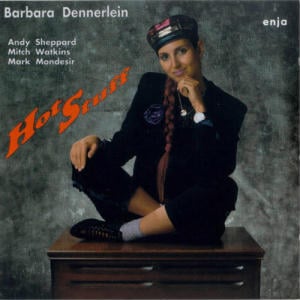 https://drive.google.com/open?id=1Z9z71njYqHN4sxUPcGNt-Ba0mlm2AtD6" rel="nofollow - https://drive.google.com/open?id=1Z9z71njYqHN4sxUPcGNt-Ba0mlm2AtD6 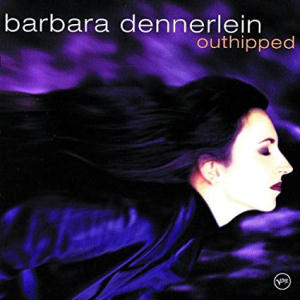 https://drive.google.com/open?id=1OJOd_oGln5nIOTAttDxpyb3tlWAYEw7W" rel="nofollow - https://drive.google.com/open?id=1OJOd_oGln5nIOTAttDxpyb3tlWAYEw7W 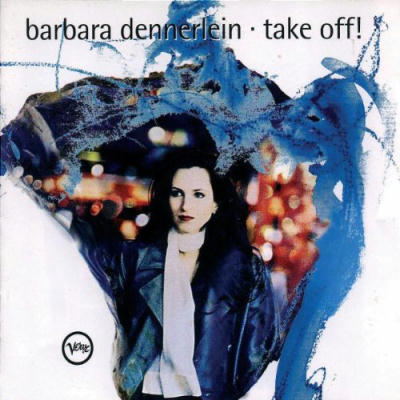 https://drive.google.com/open?id=1-eU6EwxqKdwQvEoxqk0Epumk1qiOQ4-K" rel="nofollow - https://drive.google.com/open?id=1-eU6EwxqKdwQvEoxqk0Epumk1qiOQ4-K 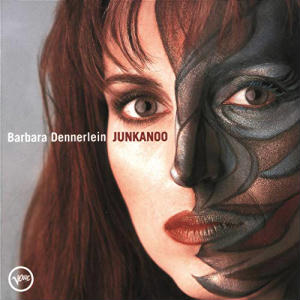 https://drive.google.com/open?id=1LBx5-aSsC3NgX0AHPoYPNNryJTrSWFh_" rel="nofollow - https://drive.google.com/open?id=1LBx5-aSsC3NgX0AHPoYPNNryJTrSWFh_ 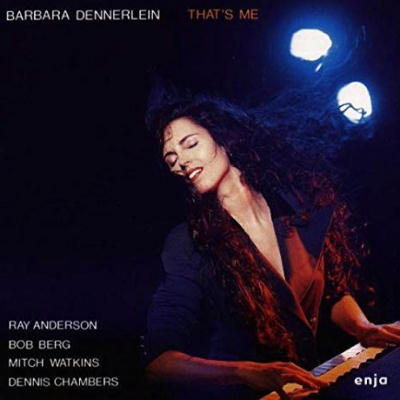 https://drive.google.com/open?id=1N9ql_y5GYgB-2GjpFKNeoXLK-piquaNI" rel="nofollow - https://drive.google.com/open?id=1N9ql_y5GYgB-2GjpFKNeoXLK-piquaNI  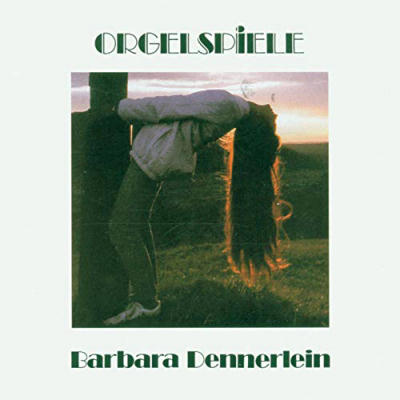 and here one of here pipe organ albums, recorded live at the Kaiser-Wilhelm Gedächtniskirche in Berlin in 2007 (the album was released in 2008). absolutely amazing what she gets out of it, including a version of the Rolling Stones hit "Satisfaction" 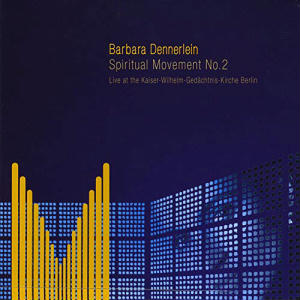 https://drive.google.com/open?id=1lUGczI4Hb3NE7I6AI1Mkt-CGG-jgZYZl" rel="nofollow - https://drive.google.com/open?id=1lUGczI4Hb3NE7I6AI1Mkt-CGG-jgZYZl since Barbara Dennerlein has to be seen to be believed I will include a video clip of her. the band (consisting of Mitch Watkins on guitar, Rick Keller on sax, Tony Reedus on drums and of course Barbara on her beefed-up Hammond B-3) is really on fire here. Barbara's blistering solo starts at 5:30: listen to my examples carefully and don't judge hastily. this is perhaps not the run-of-the-mill jazz-rock/fusion, but this makes it in my opinion even more exciting. in my opinion an artist like her should not be missing in the archives
------------- 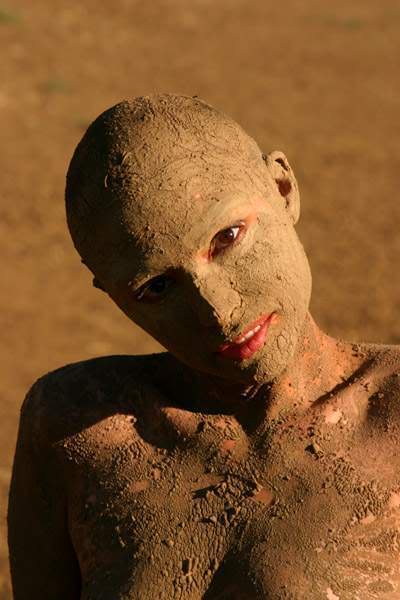 A shot of me as High Priestess of Gaia during our fall festival. Ceterum censeo principiis obsta |
Replies:
Posted By: BaldFriede
Date Posted: January 31 2020 at 11:58
|
I just found two great videos of Barbara with guitarist Brian Pardo
and drummer Paul van Wageningen that I had not seen before. Barbara
does some incredible solos in them including a bass pedal solo, so I
thought I should add them to the video that Jean already posted. ------------- 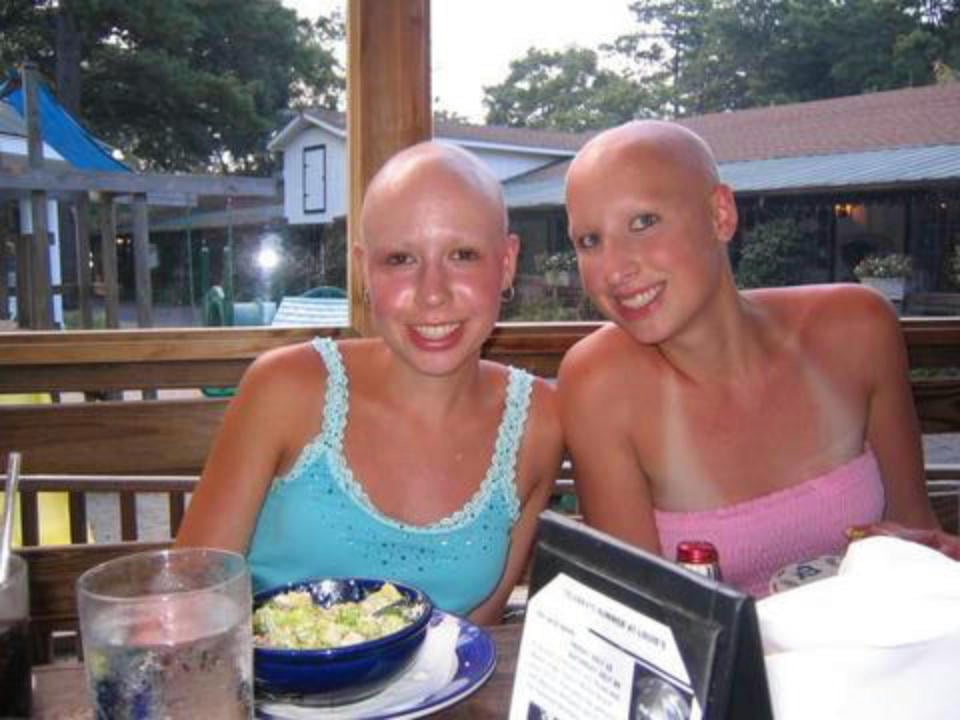 BaldJean and I; I am the one in blue. |
Posted By: BaldJean
Date Posted: February 01 2020 at 02:48
|
what Barbara does in these videos Friede found is absolutely INSANE. her
5 minutes and something solo in the first one starting at 6:30 just
keeps getting wilder and wilder, with lightning fast runs and some
absolutely CRAZY stuff that defies the imagination. and the pedal solo
in the second one - YEEEESSSS. do yourself the favor and get an eye-and
eargasm from watching this absolutely amazing woman
-------------  A shot of me as High Priestess of Gaia during our fall festival. Ceterum censeo principiis obsta |
Posted By: BaldJean
Date Posted: February 01 2020 at 12:17
|
the way: now I know why Barbara Dennerlein is such an awesome player: she is not human, she is a Vulcan. just look at her ears!    caught you, Dennerlein. confess!  -------------  A shot of me as High Priestess of Gaia during our fall festival. Ceterum censeo principiis obsta |
Posted By: Guests
Date Posted: February 01 2020 at 12:47
|
Around 27 albums, out of which I'm hearing mostly 2 or 3 records that could be categorized as fusion, and out of those I'm not hearing much of fusion that we use as a basis for inclusion into our progressive rock related fusion genre. So it's not gonna fly, sorry. |
Posted By: BaldJean
Date Posted: February 01 2020 at 12:54
ahem. an artist does not have to be all in one genre to be included. on the contrary, the more an artist gets out of the pigeonhole of "genre" the more progressive he/she is. Barbara Dennerlein is in a genre of her own and most definitely an innovator -------------  A shot of me as High Priestess of Gaia during our fall festival. Ceterum censeo principiis obsta |
Posted By: Guests
Date Posted: February 01 2020 at 13:03
|
She doesn't have to be in one genre, but it is closer to jazz and hard bop than progressive rock, which is the one thing this site is archiving. And that is the only thing that matters, an artist doesn't have to be innovative or even good at all to get accepted on the site.
|
Posted By: BaldJean
Date Posted: February 01 2020 at 13:13
|
I still disagree. while she made a lot of albums that are not jazz-rock/ fusion at all (like many artists that are in that genre on this site) her string of albums with guitarist Mitch Watkins (there are 6 of them) do in my opinion all at least fall partially into that genre. Watkins brought a lot of rock into her music. allow me to cite the definition for the genre on this site, highlighting why I am for the inclusion of Barbara Dennerlein: Jazz Rock/Fusion definition
Only the most progressive of nu jazz, jazz-rock and fusion artists are listed on Progarchives, although accceptability or not here may vary from person to person. All artists have elements of progressive rock in their music (e.g. Jean Luc Ponty, Bill Bruford or David Sancious) or they represent the most forward-looking and progressive element in their genre (e.g. Miles Davis, Herbie Hancock or Weather Report). It should be noted that those many Canterbury jazz rock fusion bands, e.g. Soft Machine, Soft Works, Soft Heap, Soft Machine Legacy, Gilgamesh etc. are to be found under the CANTERBURY heading in Prog Archives. I think all this definitely merits the inclusion of Barbara Dennerlein. especially in view of this band, who is much less on the rock side of things than Barbara Dennerlein, and yet they are in the archives: compared to Soft Heap Barbara Dennerlein is rock pure. mark that I am not questioning the inclusion of Soft Heap; I am all for their inclusion. but you won't find any trace of rock in their albums -------------  A shot of me as High Priestess of Gaia during our fall festival. Ceterum censeo principiis obsta |
Posted By: Guests
Date Posted: February 01 2020 at 14:16
|
Feel free to disagree, but I'm not about to waste my time or other volunteers time on this suggestion (unless they explicitly want to grab it, though I can tell odds are not good from the start). Also it frankly says later in the definition:
Deciding which fusion is not progressive and which is, is a decision on our part, and I can't help it if I hear different things in Soft Heap and something like 'Outhipped', both are called as fusion albums but I see them as miles apart.
|
Posted By: BaldJean
Date Posted: February 01 2020 at 14:32
I totally agree! the Soft Heap album has almost no rock components, but there are plenty in "Outhipped" -------------  A shot of me as High Priestess of Gaia during our fall festival. Ceterum censeo principiis obsta |
Posted By: BaldJean
Date Posted: February 01 2020 at 15:47
|
this is a link to Barbara Dennerlein's entry in the Jazz Archives: http://www.jazzmusicarchives.com/artist/barbara-dennerlein" rel="nofollow - http://www.jazzmusicarchives.com/artist/barbara-dennerlein please note that the musical styles she is listed for are "Soul Jazz / Hard Bop / Fusion / Third Stream / Post-Fusion Contemporary / Post Bop / Big Band" and 4 of her albums ("Orgelspiele", "Hot Stuff", "That's Me" and "Take Off") are listed as "fusion" there
-------------  A shot of me as High Priestess of Gaia during our fall festival. Ceterum censeo principiis obsta |
Posted By: Guldbamsen
Date Posted: February 02 2020 at 00:59
|
Just wanted to second George’s opinion here. I hear a jazz musician making jazz music that occasionally veers into other styles...but never enough to call it anything other than jazz. At least to my ears. Said another way: before we think about artists like Dennerlein we already have jazz artists who are far closer to fusion than she ever was. Pharoah Sanders, Herbie Mann, Sun Ra, John Coltrane and so forth. It quickly gets to be a neverending list of jazz artists who all are widely known and respected as jazz artists..shoehorned into an odd prog rock connotation... and we effectively end up with a jazz category that starts looking like JMA. Then again jazz is brilliant and doesn’t exactly need to be anything other in order to woo the pants off of me  Based on what I’ve checked out so far I am pretty sure I will be ordering Orgelspiele. Oh and before I end: Never ever conflate evaluations over PA with quality control! Those are two very different things. ------------- “The Guide says there is an art to flying or rather a knack. The knack lies in learning how to throw yourself at the ground and miss.” - Douglas Adams |
Posted By: ExittheLemming
Date Posted: February 02 2020 at 01:24
|
If the pair of you were lobbying the EU to outlaw gravity, I suspect you have the capacity to wear down even the most obdurate commissioners into an exhausted and exasperated acquiescence. I own and enjoy 4 Dennerlein CD's, including Hot Stuff which is funky blues/hard bop and Junkanoo where yes, the Bahamian inspired percussion certainly lends the music an exotic texture but neither are jazz rock/fusion albums to my ears. (Keith Emerson's Honky solo album from 16 years previously, also exploits this ethnic rhythmic element so it's hardly unprecedented in either Jazz or Rock) That said, there may be other BD albums I haven't heard which do qualify. I'm not sure why use of a MIDI modded Hammond or virtuosity on bass foot-pedals has anything to do with inclusion criteria? For me she's a plain vanilla post bop jazz
musician who occasionally reciprocates her fusion and classical
influences. The Jazz Rock/Fusion genre is by definition, a very broad church but that's principally because Jazz has been fused with practically every other genre since the dawn of time and it should be self evident that not all the results are eligible for inclusion on PA. The PA definition also states that if an artist doesn't have elements of Progressive Rock in their music they would have to represent the most forward-looking and progressive element in their genre. I'm not remotely convinced Dennerlein would tick either box.
------------- 
|
Posted By: BaldFriede
Date Posted: February 02 2020 at 03:19
|
I think the differing opinions here are based on a misunderstanding. Jean certainly would not want to have Barbara Dennerlein included into jazz-rock; that she clearly isn't. However, the category in question is NOT called "Jazz-Rock" but "Jazz-Rock/Fusion". This seems to suggest that there is a difference between the two, though they are often used synonymously. To add to the confusion Wikipedia offers neither term but instead "Jazz Fusion" and defines it like this: "Jazz fusion (also known as fusion) https://en.wikipedia.org/wiki/Jazz_fusion#cite_note-1" rel="nofollow - [1] is a music genre that developed in the late 1960s when musicians combined jazz harmony and https://en.wikipedia.org/wiki/Jazz_improvisation" rel="nofollow - improvisation with https://en.wikipedia.org/wiki/Rock_music" rel="nofollow - rock music , https://en.wikipedia.org/wiki/Funk" rel="nofollow - funk , and https://en.wikipedia.org/wiki/Rhythm_and_blues" rel="nofollow - rhythm and blues .
Electric guitars, amplifiers, and keyboards that were popular in rock
and roll started to be used by jazz musicians, particularly those who
had grown up listening to rock and roll.
Jazz fusion https://en.wikipedia.org/wiki/Arrangements" rel="nofollow - arrangements vary in complexity. Some employ groove-based vamps fixed to a single key or a single chord with a simple, repeated melody. Others use elaborate chord progressions, unconventional time signatures, or melodies with counter-melodies. These arrangements, whether simple or complex, typically include improvised sections that can vary in length, much like in other forms of jazz. As with jazz, jazz fusion employs brass and woodwind instruments such as trumpet and saxophone, but other instruments often substitute for these. A jazz fusion band is less likely to use piano and double bass, and more likely to use electric guitar, synthesizers and bass guitar. The term "jazz rock" is sometimes used as a synonym for "jazz fusion" and for music performed by late 1960s and 1970s-era rock bands that added jazz elements to their music. After a decade of popularity during the 1970s, fusion expanded its improvisatory and experimental approaches through the 1980s in parallel with the development of a radio-friendly style called https://en.wikipedia.org/wiki/Smooth_jazz" rel="nofollow - smooth jazz . Experimentation continued in the 1990s and 2000s. Fusion albums, even those that are made by the same group or artist, may include a variety of musical styles. Rather than being a codified musical style, fusion can be viewed as a musical tradition or approach." Taking that definition as reference Barbara Dennerlein does in my opinion certainly qualify because both Funk and Rhythm and Blues are very prominent in her music (as well as for example Latin, Carribean or even Salsa). And these passages "Others use
elaborate chord progressions, unconventional time signatures, or
melodies with counter-melodies. These arrangements, whether simple or
complex, typically include improvised sections that can vary in length,
much like in other forms of jazz" and "Rather than being a codified musical style, fusion
can be viewed as a musical tradition or approach" most definitely fit her music. Rock is not so much a characteristic of her music, though there are exceptions like "Wow!" from "Hot Stuff" (she once explained in an interview that it was specifically written for her appearance on a German TV-program called "Ohne Filter" meaning "Without Filter"; she thought she needed at least one rock number for that) or the Rolling Stones cover "Satisfaction" from "Outhipped". -------------  BaldJean and I; I am the one in blue. |
Posted By: siLLy puPPy
Date Posted: February 02 2020 at 07:27
|
^ i admire your command of language and tenacity. A rabid Dennerlein fan you are! You are correct in your assessment of the definitions of jazz-rock / fusion etc. The thing is we only add THE MOST PROGRESSIVE of fusion artists NOT EVERY FUSION ARTIST. While her fusion is clearly laced with rock, it's not progressive rock. I did check out a couple albums so far and i have not heard anything to shoot it into the prog-o-sphere. We have rejected artists with much more fusion qualities than Barbara. I personally have suggested many artists that i felt should have been here but were rejected by the rest of the team based on the not proggy enough. It is a good policy otherwise we'd have to add hundreds of artists who may have technically had a few fusion albums but weren't primarily focused upon it. I agree that some artists that were included in the early days of the site probably shouldn't have been and hopefully a great culling will occur but most likely not. So on behalf of the team, i'm sorry but i don't think she is progressive rock oriented enough. A talented and admirable artist for sure and i thank your for making me aware of her :) -------------  https://rateyourmusic.com/~siLLy_puPPy |
Posted By: BaldFriede
Date Posted: February 02 2020 at 11:17
Funny how someone who is not highly innovative can be called "the most interesting organist to emerge during the 80s", isn't it? Jean highlighted lots of quotes from reviews of her where is called exactly that which you doubt.
-------------  BaldJean and I; I am the one in blue. |
Posted By: ExittheLemming
Date Posted: February 03 2020 at 07:53
|
Maybe I missed the memo advising that most interesting has been rebranded highly innovative. Which begs the question: would an artist considered as either innovative or interesting 40 years ago, still fulfill those descriptions now? I can quote you loads of people who disagree with my opinions on all
manner of topics but it wouldn't change those opinions in the slightest.
Hell, there are sufficient dissenters to have created entire websites
dedicated to a flat earth, white supremacy, homophobia, christian
fundamentalism and even Manchester United ffs. (does published opinion equate to credible opinion from your perspective?) If so, that simply reinforces my suspicion that you clearly don't trust your own judgement and by extrapolation, need the reinforcement of others to validate your opinions)
------------- 
|
Posted By: BaldFriede
Date Posted: February 03 2020 at 08:18
All the highlighted passages in the reviews Jean cited in her original post are about her being innovative, like "rewriting the rulebook" or "breaking the mold". If you actually do a Google search for Barbara Dennerlein in combination with the word "innovative" you will find countless websites. This passage is taken from a review of her album "My Moments": Perhaps only once in a generation or two, a musician emerges
whose talent, skill and innovation takes virtuosity on their chosen
instrument to a level never seen or heard before. Barbara Dennerlein is
such a musician, and the organ, both the Hammond B3 and the Pipe Organ,
are her instruments. The full review can be found here: https://tinyurl.com/u73vma7" rel="nofollow - https://tinyurl.com/u73vma7 As to your question: Maybe not, but the question is missing the point. The important thing is that at some time the artist in question definitely was innovative. Also Barbara continued to stay innovative over the years. You just have to read an online biography of her to become aware of that. Or listen to her albums without a prejudiced ear.
-------------  BaldJean and I; I am the one in blue. |
Posted By: ExittheLemming
Date Posted: February 03 2020 at 08:27
|
I wouldn't be wasting your inestimable energy on persuading me, it's the genre team(s) you have to convince ------------- 
|
Posted By: BaldJean
Date Posted: February 13 2020 at 20:30
|
another quote from an an article in which Barbara Dennerlein is mentioned (Belles of the B3: Scott, Tsuruga and Dennerlein). highlights by me again. German organist Barbara Dennerlein has had a distinguished career
successfully taking her B3 to places where it was previously unwelcome.
Her compositions and style have braved a path for her instrument that
doesn't follow the norm. As such, Change of Pace is much more
than its title implies and is as much kin to Gershwin as it is to
organist Keith Emerson's more adventurous works with The Nice and
Emerson, Lake & Palmer. That said, Dennerlein's awesome technique
and compositional skills do break new musical ground as she exquisitely
blends her B3 trio, which includes saxophonist Peter Lehel and
drummer/percussionist Daniel Messina, into the State Philharmonic
Orchestra of Rhineland-Palatinate conducted by Bernd Ruf. The resultant
sound, due in some part to her expert use of synthesizers, thrills as
only a musical aggregation of this magnitude could. The strings are
glorious, the brass voicings superb and the winds are joyous as
Dennerlein's organ meets the philharmonic as equal partner. Recorded
live, five extended compositions artfully combine classical, jazz and
rock using intricate tempos, quick changes, mood shifts and more than a
hint of exoticism to present rhapsodic stylistic wholes. This is a major
release by one of the B3's foremost proponents. and here a link to the album in question: https://drive.google.com/open?id=1B_v6XG2l3qHtpEVXOLgZkNeM3Ri8foT5" rel="nofollow - https://drive.google.com/open?id=1B_v6XG2l3qHtpEVXOLgZkNeM3Ri8foT5 this album is definitely innovative -------------  A shot of me as High Priestess of Gaia during our fall festival. Ceterum censeo principiis obsta |
Posted By: BaldJean
Date Posted: February 13 2020 at 21:50
|
here is Barbara Dennerlein being extremely experimental on the pipe organ: -------------  A shot of me as High Priestess of Gaia during our fall festival. Ceterum censeo principiis obsta |
Posted By: BaldJean
Date Posted: February 14 2020 at 08:35
|
Barbara Dennerlein can even sound like hard rock: -------------  A shot of me as High Priestess of Gaia during our fall festival. Ceterum censeo principiis obsta |
Posted By: Guests
Date Posted: February 14 2020 at 09:53
|
I'm sorry if you thought that the suggestion is still up for discussion till the end of time but it is not, we have heard enough of her work and didn't find something that would make us formally evaluate her. Feel free to appreciate her in her own separate thread or something but I'm closing this one for good. |
 historian9 wrote:
historian9 wrote: